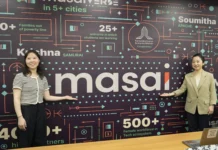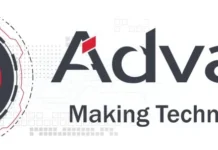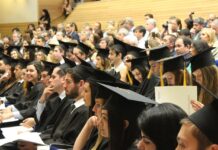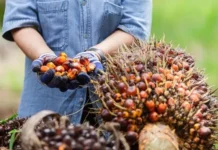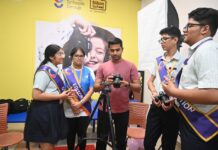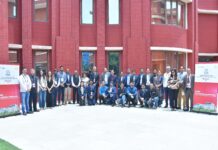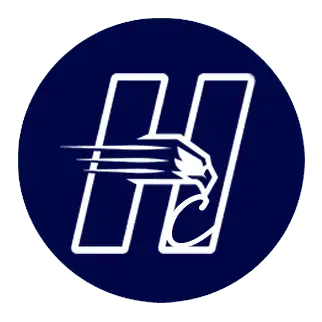Gurugram, 18th November 2021: Heritage Xperiential Learning School recently completed an expedition for its 4th Graders. This expedition on ‘Maps- Exploration and Movement’ was designed to assist the students in understanding their expanding social and physical spaces and they went from near to far like they do while exploring most other concepts at Heritage. Its objective was also to help students understand the reasons behind the journeys were taken by people and the impact such journeys and movements have had in shaping the world around us. The students explored the various geographical features of the planet they inhabit and tried to comprehend their expanse.

Important Announcement – EasyShiksha has now started Online Internship Program “Ab India Sikhega Ghar Se”

The expedition was divided into 3 parts each with distinct learning objectives:
· The first part was to do with understanding the various components of the map. This included seeing how a map is different from a picture of a place and then studying the various essential elements of a map like directions, symbols and legends and interpreting the scale on a map.
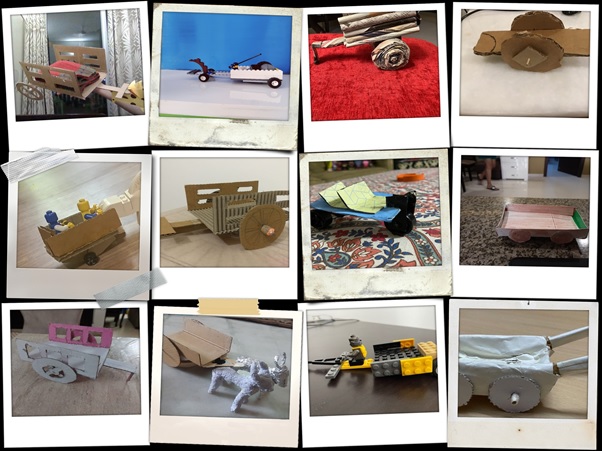
· The second part included using different kinds of maps to explore how the natural and cultural environments of people are related. In this part, students learnt about the different types of maps as well as the variety of landforms on earth. They went into depth about how landforms and natural resources influence settlements and the migration of people.
· The third part of the project focused on explaining how the movement of people, things and ideas shaped the world. Students used their map reading skills to understand the fascinating journeys of humankind that were filled with adventures, bravery, inventions and discoveries.
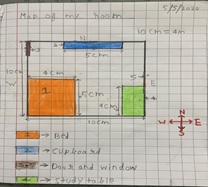
In part 1 of the expedition, students started with building a compass using everyday materials available at home. They experienced how cardinal directions are used in their daily lives in getting from one place to another. They made scaled maps of their rooms and hand-drawn images of theme parks and other places out of their imagination and used symbols and legends that they felt would make the place easy to navigate. Then their spatial-intelligence muscles were stretched as they made 3-D shoebox models of a room of their choice with furniture and other elements placed in it. They created this model using the concept of bird-eye view. Their creativity was at its best trying to pick and shape different materials to make models of things like beds, study tables, TV, laptops and even decorative accessories in their rooms.
As part of part 2 of the expedition, students created 3D models of places with different landforms using different materials and also labelled them with toothpick placards. As part of project 3, while studying the movement of people, students saw how wheels revolutionized travel and created their own modes of transportation using wheels. Students shared and presented personal experiences of their families migrating and traced and analyzed how movements of ideas, goods and people changed the world. Using Indian crafts to showcase the diversity across different states of our country, students used multiple methods like theatre and other art forms to display Indian crafts of their choice collaboratively during the culmination.
Top Courses in Software Engineering
More Courses With Certification
This expedition was another classic example of an expedition that so naturally brought multiple subject areas into its fold each adding and supporting to the learning from the other. The fundamentals of Geography like learning to read and create maps and the different kinds of landforms were studied. The expedition explored the concept of migration and the reasons behind why people move and also how goods and ideas have travelled from early recorded history and continue to do so.
Students also went in-depth into studying the diversity that exists in the various states of India and the reasons that contribute to this diversity. They learnt to appreciate diversity and the rich cultural exchanges that come about because of it and started seeing it as something to be preserved and encouraged. The above-mentioned strands are a part of the social sciences subject area that was taken up during the expedition.

Students learnt about informative writing as part of this expedition and attempted several drafts of informative writing about different places and events. Math was integrated as ratio and proportion form the basis of scaling and students picked it up with ease as they could relate to its practical application. Physics was used while making the compass as the concept of Earth’s magnetic field was delved into. Elements of performing and visual arts were used for the culmination where crafts of India were showcased by students.
“The experiential learning through these expeditions ensures that students learn through authentic, engaging, and hands-on experiences. These expeditions help students develop their cognitive and creative abilities and stimulate their minds as they explore unique and complex problems and try to find meaningful solutions to them. Experiential learning accelerates the development of vital skills such as critical thinking, problem-solving and effective decision-making,” said Neena Kaul — Principal, Heritage Xperiential Learning Systems.
For information related to technology, visit HawksCode and EasyShiksha

Empower your team. Lead the industry
Get a subscription to a library of online courses and digital learning tools for your organization with EasyShiksha
Request NowALSO READ: The-worldgrad-announces-partnership-with-us-universities
Get Course: Online-Sociology-Courses






















